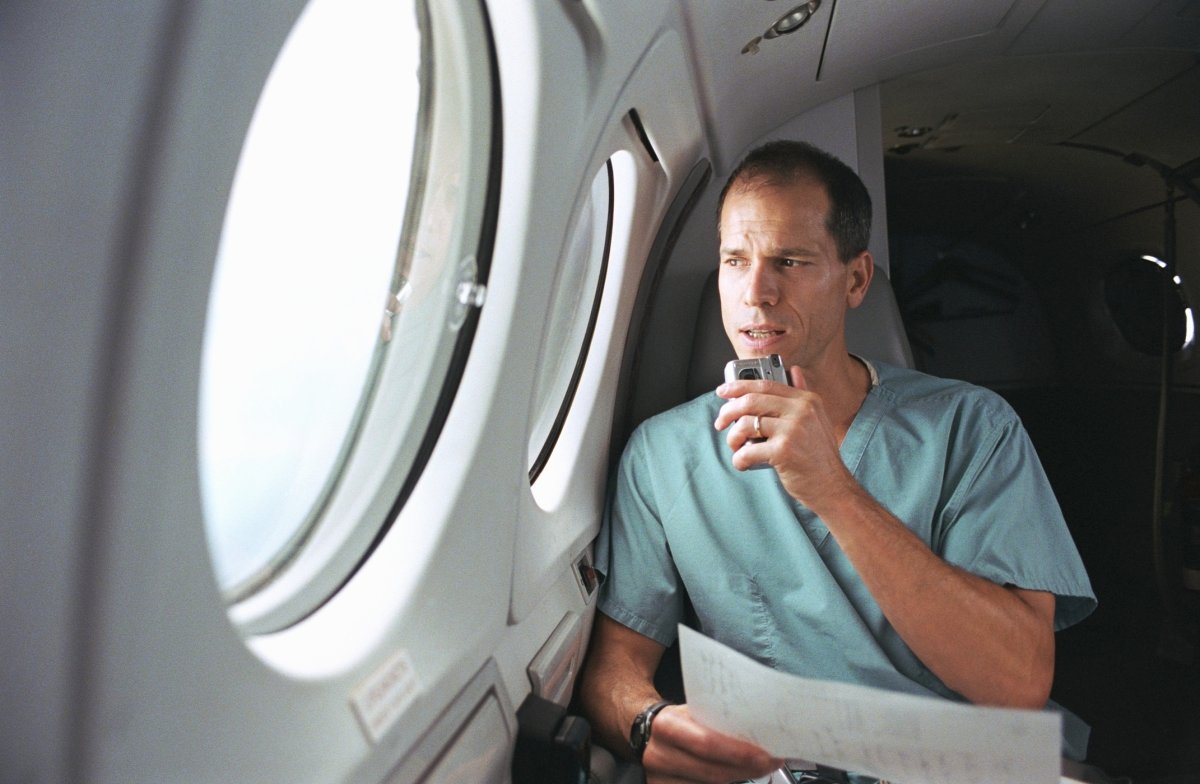The number of airline passengers is increasing every year, which means the chances of witnessing or experiencing an in-flight emergency is becoming more likely – and when you’re at 36,000 feet in the air, who are passengers supposed to turn to for help?

If you’re lucky, there will be an off-duty physician or nurse just a few seats away.
READ MORE: Why Canadians are being warned about visiting parts of Jamaica
But with much of Canada not having protocols in place in regard to physicians coming to the assistance of emergencies in-flight (Quebec being the exception), many physicians are left wondering what they can do should they attend to the medical needs of a fellow passenger.
The need for protocols like these is especially relevant today as the number of passengers continues to increase. In fact, in Canada, there was a 27 per cent increase in passengers between 2009 and 2015, the report says.
That’s why physicians at St. Michael’s Hospital (in partnership with Air Canada and WestJet) have come up with recommendations for in-flight medical emergencies for healthcare professionals, which appear Monday in the journal CMAJ.
- ‘She gets to be 10’: Ontario child’s heart donated to girl the same age
- Bird flu risk to humans an ‘enormous concern,’ WHO says. Here’s what to know
- Buzz kill? Gen Z less interested in coffee than older Canadians, survey shows
- Canada updating sperm donor screening criteria for men who have sex with men
“It’s information for medical personnel who aren’t as comfortable in emergency situations, like psychiatrists or family doctors, who may be encountering these emergency situations,” says Dr. Alun Ackery, an emergency physician at St. Michael’s Hospital and senior author of the recommendations. “We’re hoping to give them some tools and arm them with information so that should they have an emergency on these airlines.”
“We’re trying to provide them with these tools to familiarize themselves so that when are they faced with emergencies they’re a bit more prepared,” says co-author Dr. David Kodama, who is also an emergency resident at the University of Toronto.
According to the researchers, it’s difficult to determine how many in-flight emergencies happen in a year. They’ve seen figures that range from one event per 7,700 passengers to 16 events per one million (or one per 62,500 passengers).
The top five causes of medical emergencies include lightheadedness/loss of consciousness (about 37 per cent), respiratory symptoms (12 per cent), nausea or vomiting (9.5 per cent), cardiac symptoms (almost eight per cent) and seizures (almost six per cent).
And in these cases, physicians are the primary responders in 40 to 50 per cent of in-flight emergencies, researchers say. This is followed by nurses and paramedics in five to 25 per cent. Flight attendants, however, are the primary responders in 45 per cent of events.
READ MORE: Nova Scotia announces new immigration stream to attract more doctors
Some of the recommendations included in the report discuss the resources available to medical personnel, how to approach certain medical problems, and who the people they can talk to and consult are.
For example, not many medical professionals know that many airlines will hire an external company that will provide medical assistance from the ground. It’s also that company which makes the decision on whether a plane should be diverted due to the medical emergency.
(Researchers say about seven per cent of in-flight emergencies actually result in a diversion. The cost of diverting an aircraft because of a medical emergency costs anywhere between $3,000 to almost $90,000. The decision to divert the plane depends on the medical condition and the stability of the patient.)
Both Ackery and Kodama hope these new recommendations not only bring awareness to medical professionals of their options, but make sure they feel comfortable attending to these unexpected calls should (and when) they happen, while also ensuring patient safety.







Comments